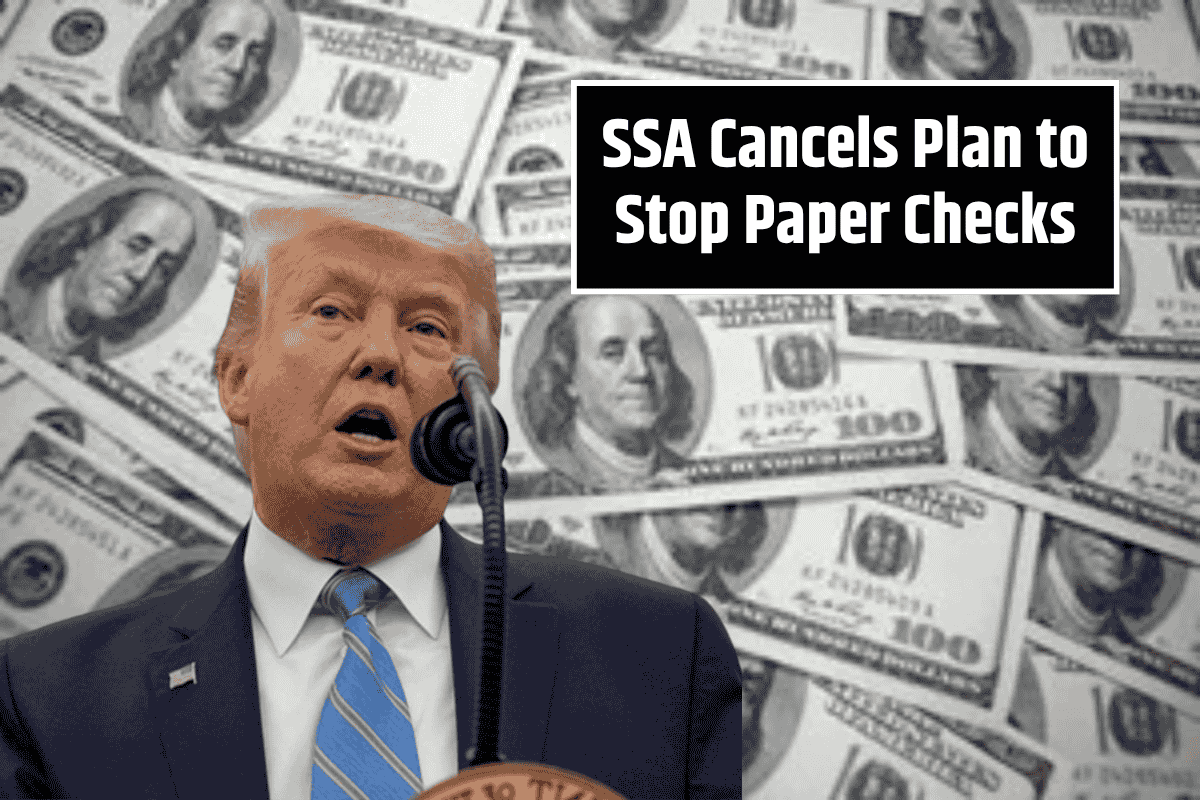The recent news about the Social Security Administration (SSA) planning to stop sending paper checks created a lot of worry, especially among senior citizens, rural residents, and people with limited access to banks. But now, there’s good news — paper checks are not going away.
Let’s understand what happened, why people were concerned, and what the final decision means for you.
What Was the SSA’s Initial Decision?
In July 2025, the SSA announced that from September 30 onwards, they would stop sending paper checks for benefits like retirement payments, SSDI, and SSI.
This change was part of a larger plan under President Donald J. Trump’s executive order to modernize government systems and move everything to digital. The SSA believed that electronic payments were faster, safer, and more reliable than mailing physical checks.
They said that less than 1% of recipients still used paper checks, as most had already shifted to direct deposits or prepaid debit cards like Direct Express.
Why People Got Upset
Even though only a small number of people were still getting paper checks, this change was a big deal, especially for older adults, people in remote or rural areas, and those without bank accounts or smartphones.
For many, paper checks were simple and familiar. Social media was flooded with complaints, and the SSA’s phone lines were jammed with worried calls. People feared losing access to their money, especially in places where ATM machines are rare and digital payments are not accepted everywhere.
How Senator Warren Stepped In
Senator Elizabeth Warren from Massachusetts stood up for these people. She explained that not everyone has access to technology or banks. She spoke directly to the SSA and worked out an agreement with Commissioner Frank Bisignano.
Thanks to this deal, the SSA reversed its earlier decision. Now, they will continue to send paper checks to those who truly need them.
Who Benefits from This Change?
This decision helps many groups:
Senior citizens who prefer traditional banking
People living in small towns or rural areas without good bank access
Those receiving Supplemental Security Income (SSI)
Households without bank accounts (4.2% of U.S. households as per 2023)
Around 740,000 people out of 74 million Social Security and SSI recipients were still using paper checks as of June 2025. That 1% may be small, but it’s a significant number of people who depend on this method.
SSA’s Plan Moving Forward
While the paper checks will continue for now, the SSA still encourages people to switch to digital payments for convenience and safety.
They will provide help to set up direct deposits or use the Direct Express card, which doesn’t require a regular bank account. It allows easy access to cash through ATMs and can be used for purchases anywhere in the U.S.
SSA will also keep spreading awareness about the benefits of electronic payments, like faster delivery and less chance of mail theft, which had increased by 160% between March 2020 and February 2021.
Are Your Benefits Safe?
Yes, your benefits are safe, no matter how you receive them. The Social Security Act (Section 207) protects your payments from most creditors. The Consumer Credit Protection Act also ensures that two months of your benefits cannot be taken away for any claims.
These protections apply whether you get a paper check or a digital payment.
The SSA has promised to keep sending paper checks to people who need them, while continuing to offer safer, faster electronic payment options. If you prefer paper checks and can’t easily switch, you don’t need to worry — your payments will continue as before.
For those who can use digital methods, the SSA recommends making the shift to avoid any future delays or theft risks. And remember, if you ever need help with this transition, SSA representatives are available to guide you.
